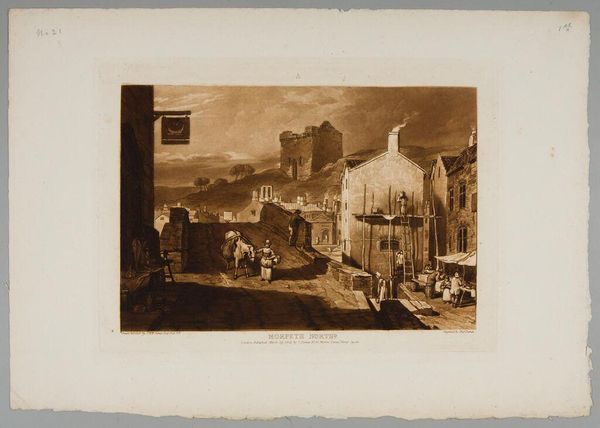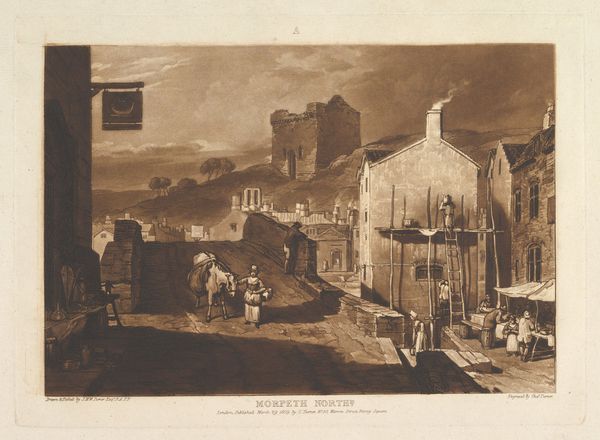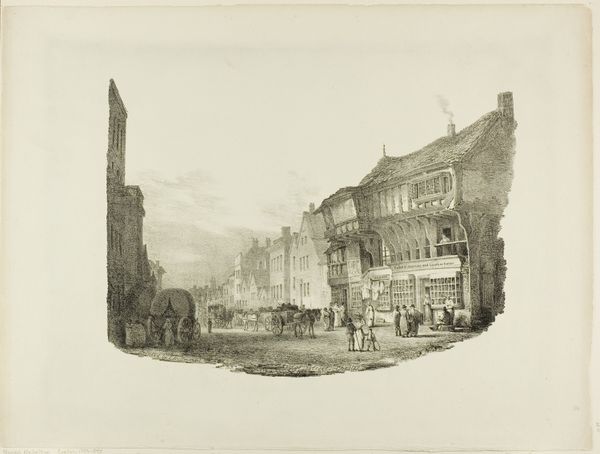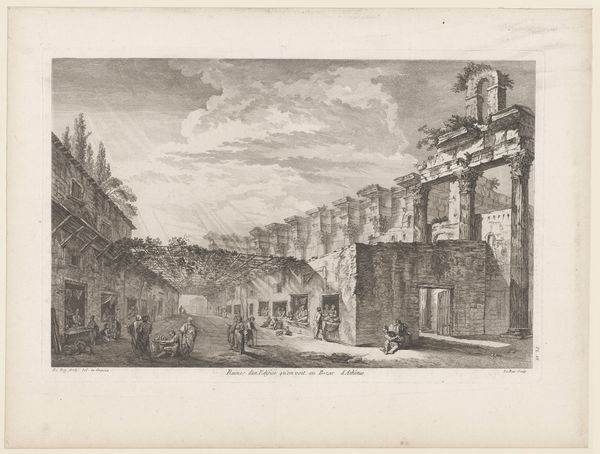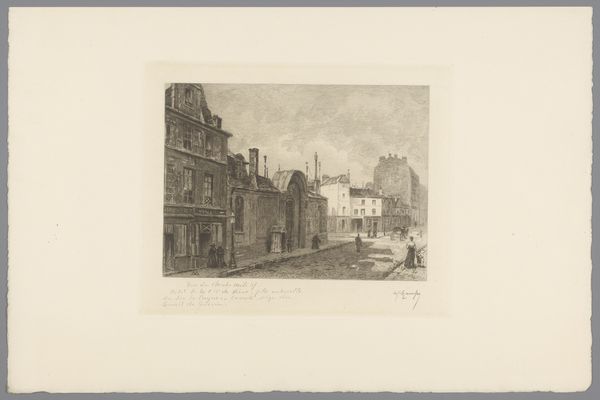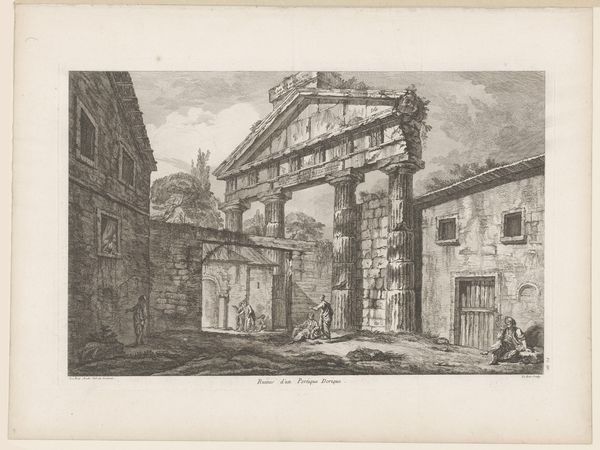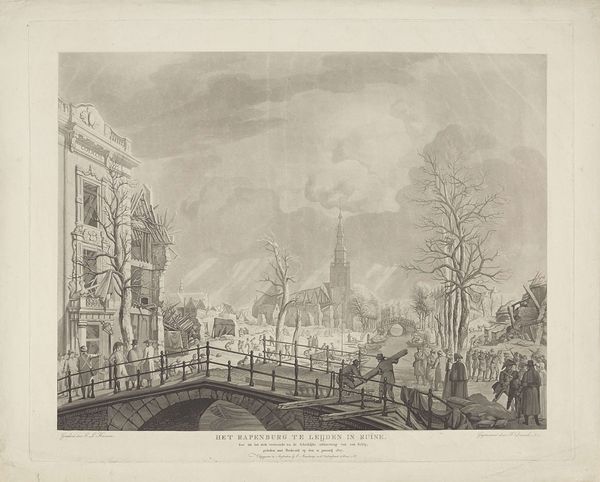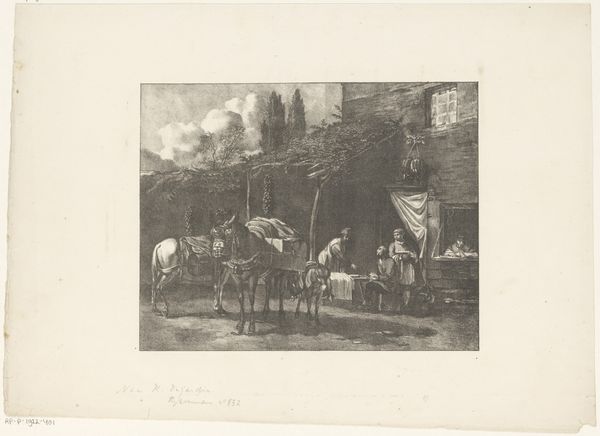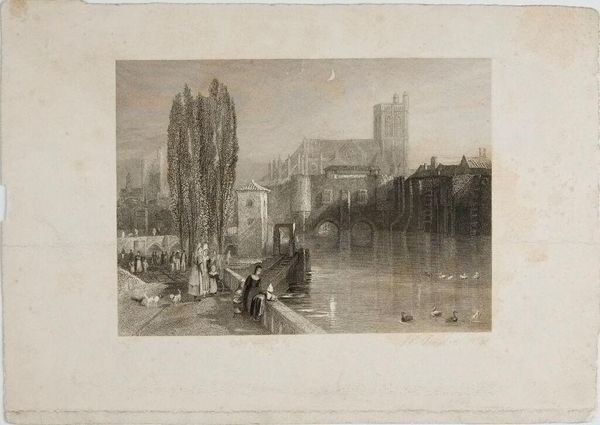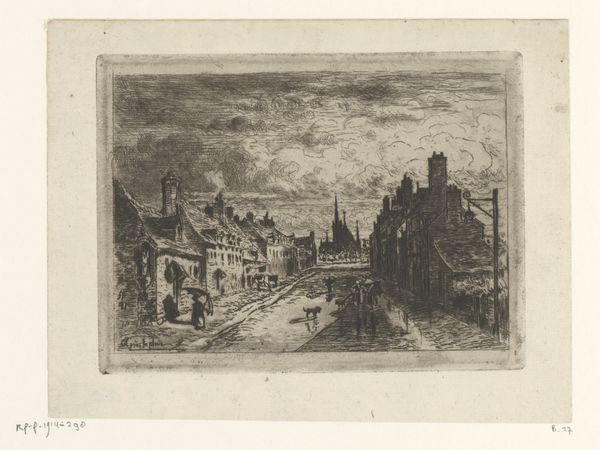
Dimensions: plate: 21.2 Ã 29.4 cm (8 3/8 Ã 11 9/16 in.) sheet: 26 Ã 33.7 cm (10 1/4 Ã 13 1/4 in.)
Copyright: CC0 1.0
Curator: Here we have Charles Turner’s “Morpeth,” a print from the first half of the 19th century. It presents a somewhat romantic view of a bustling town. Editor: It's quite striking, isn't it? The sepia tone lends it an air of nostalgia, and the composition, with the figures and architecture, feels meticulously arranged. Curator: Indeed. Turner was known for his mezzotint technique, which allowed for rich tonal variations, simulating the appearance of a painting. This print would have circulated widely, shaping perceptions of northern England. Editor: Look at the workers on the scaffolding and the market vendors in the street. It shows the labor required to maintain this society. The print itself, and its circulation, is also a product of labor and material resources. Curator: Absolutely. The print’s availability speaks to the burgeoning print culture of the time, fueled by advancements in technology and growing consumerism. Its imagery promotes a particular vision of progress and industry. Editor: It leaves me contemplating the unseen hands that made this image possible. How many impressions were produced, and what materials were used in the process? Curator: Food for thought. It reminds us of the complex social and economic systems that underpin even the most seemingly simple images. Editor: It's remarkable how a single image can unveil so much about its time.
Comments
No comments
Be the first to comment and join the conversation on the ultimate creative platform.
